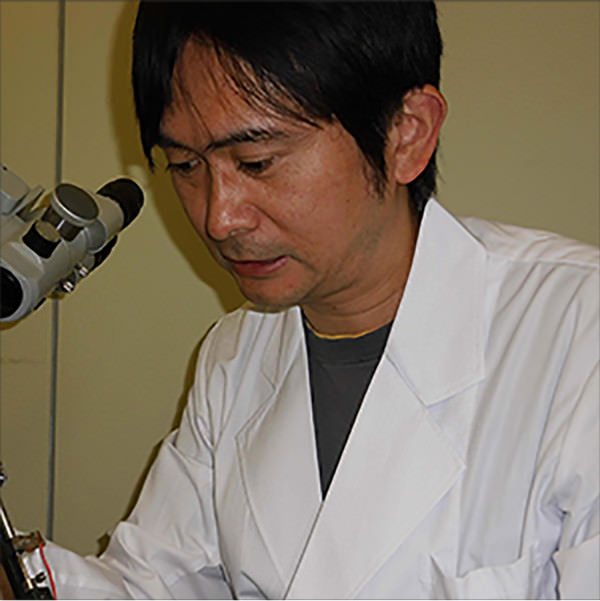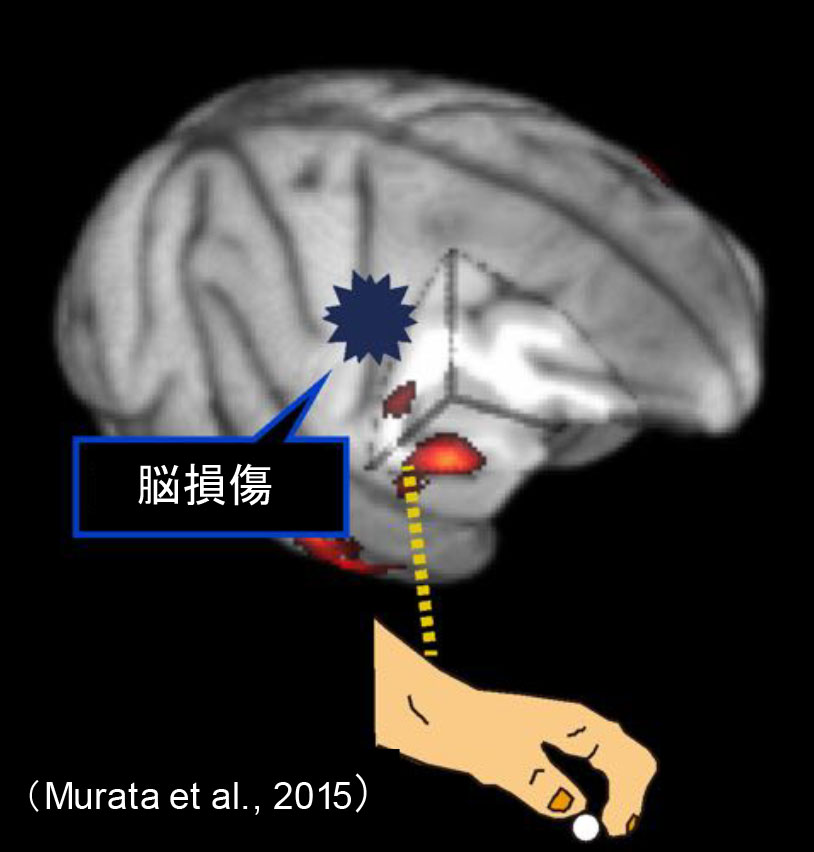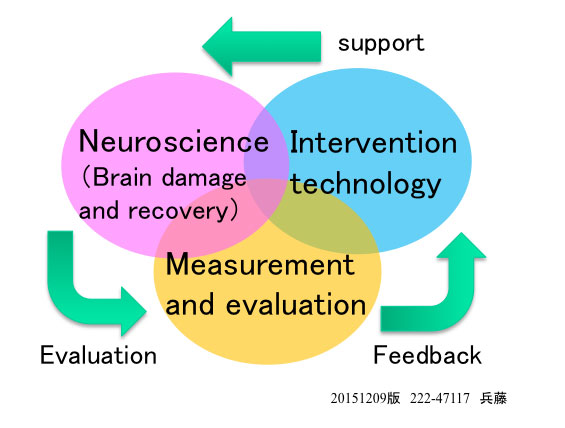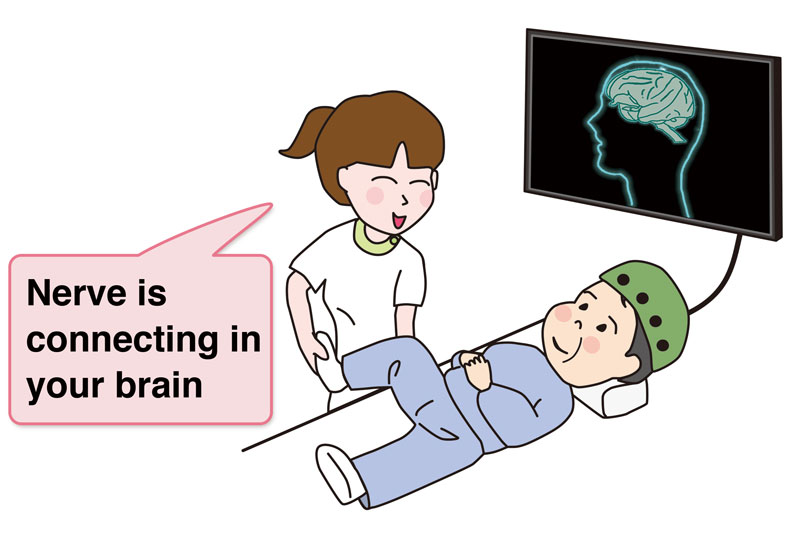Bring the Scientific Foundation into Rehabilitation! Neuro-Rehabilitation

Surprises me the Dr. Higo’s saying, There isn’t enough proofs based on the scientific study for post-stroke rehabilitation
. The rehabilitation has been practiced upon the experiences but Dr. Higo lightens the scientific side of it, which is the brain research.
In 2015 for the first time in the world, Dr. Higo’s group proved the re-construction of the neuronal circuits substituting functions of the damaged brain area when the function has been restored, by the research using the model animal.
Still takes time to apply to the human patient though, the day will come for sure. We will be able to receive the own scientific rehabilitation program with observing the brain from the outside.
Neurorehabilitation Research Group
Noriyuki Higo, Ph.D.
How the research began
Dr. Higo has been researching the brain with animals since he was a graduate student. He began the research for rehabilitation when he started his carrier in AIST.
So far the mainstream of rehabilitation research have been clinical research studies on brain-damaged patients. The drawbacks of such studies are that the damaged part of the brain is diverse depending on each case and also that it is difficult to analyze deeply with a real patient.
The research with animals made the team capable of highly-reproducible verification and to clarify the detailed mechanism.
Turn Rehabilitation to Science!
Although the mental and physical hard work been done, there have been patients not recovering enough from the paralyzed body caused by stroke. One reason of this situation would be a shortage of understanding of recovery mechanisms after brain damage.
Recently a new approach, neuro-rehabilitation, has been widely accepted so that the brain research to elucidate functional-recovery mechanisms has been attracting social attention as it backs up the new technic.
Clarify the brain plasticity underlying functional recovery of hand movements
Dr. Higo’s team measured changes of brain activity underlying rehabilitative training-induced recovery of hand movements using PET (positron emission tomography).
As a result, in 2015 it clarified that when the hand movements recovered by rehabilitation the function of damaged part of the brain had taken over by the other part of the brain.
Therefore, it has proved that the post-damaged rehabilitation of the brain and spinal cord need the appropriate changes of brain function for recovery, which means recovery can not elicit without recuperating the lost brain function.

Establish a brand new technology, the Neuro-Rehabilitation
Dr. Higo is trying to find out the best method what is the most effective exercise-stimulation-medication combination to elicit substitution of the lost brain function with a lot of his colleagues.
He is working hard to establish the new Neuro-rehabilitation technics combining the following researches; clarifying the changes of brain structures and function underlying functional recovery using the brain damaged model animals, intervention technic to induce neurite elongation and neural circuit formation employed by exercise / electric stimulation / medication, and evaluating technic to confirm the brain function is changing correctly by brain activity monitoring.

Aspiring practical use within 10 years
The new Neuro-rehabilitation technics enables a new style of rehabilitation that we can view the brain from outside observing the condition so to be able to apply more effective menu. Menu will be able to fit for individual patient depending on each brain condition with several solutions combined, as exercise, stimulation and medication.
That makes us expect high reward within the short term.
The team takes the global initiative to develop an integrated rehabilitation system to intervene and evaluate the damaged brain, aiming to put it into practical use within 10 years.


 Japanese
Japanese Topic
Topic